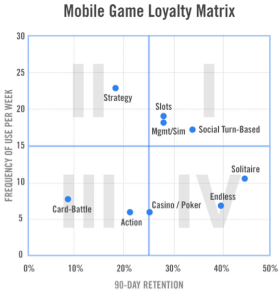Trending
Opinion: How will Project 2025 impact game developers?
The Heritage Foundation's manifesto for the possible next administration could do great harm to many, including large portions of the game development community.
A growing trend of in-game events and multiplayer features is helping developers battle the struggles of monetizing and retaining mobile gamers.

With competition in the mobile games market rising, success has become unstable; obtaining a place at the top of the charts no longer guarantees months of high revenue. With the steady influx of new, high-quality games being created, even the most popular games are seeing large portions of their player base leave, and faster than ever before. As a result, retention rates have sunk for all but the most successful games, dragging monetization rates and lifetime value down with them.
A proven method for increasing retention rates on mobile games is multiplayer features. Single player games are starting to lose steam in today’s market due to their limitations: their gameplay is either repeated ad nauseum or finite based on content length. Most mobile single player games only retain a player long enough to beat the game or grow tired of it’s core gameplay mechanic. Multiplayer provides the player with a feature that stimulates a desire for gameplay by making it more competitive and social. Some mobile games have seen multiplayer add another 50-100 hours to the game’s lifespan.
Multiplayer brings a social atmosphere that takes gameplay to a new level of intensity and excitement. With the teamwork and competition brought into the game, players are inclined to play more intensely, more often, and for longer sessions. Furthermore, players have incentive to introduce their peers to the game to compete against them, creating a free, high quality acquisition channel. Social gaming brings together strangers over a common interest, creating new connections and forming a community around the game.
Multiplayer adds a new dimension of gameplay that establishes invested players, who are more likely to generate revenue and are less prone to quitting. For example, in War Metal: Tyrant, players who are in clans have an AARPU 20 times higher than those who aren’t, with 55% of Tyrant’s revenue coming from the 6% of players that are in clans. And which players do you think play more and stick with the game?
Multiplayer itself can be further improved through live events such as tournaments. Tournaments foster a competitive atmosphere bracketed by a time limit. The immediacy of the competition increases in-app purchase likelihood and enhances gameplay to provide a more rewarding experience. The break in monotony becomes a refreshing experience for gamers and also can work together with seasonal content to keep the game feeling fresh. Real and virtual prizes can be set for the winners of the tournament, giving a strong incentive to participate and play more matches, especially if the tournament is based on number of wins rather than high score.

As you can see, developers should aim for quadrant I on the chart if they’re looking to maximize their user loyalty. In this quadrant we see the highest amount of 90-day retention and the frequency of use. What multiplayer and tournaments end up doing is taking a regular arcade game, which is most likely located in Quadrants II-IV in the shown graph, and transforming it into a social turn-based game found in Quadrant I. As shown in the graph, Quadrant I is the most ideal place to be, with both a high frequency of use and a high retention rate for its games, and is the home of popular apps such as Temple Run and Angry Birds. There is no doubt that multiplayer and tournaments significantly help a game reach that stage.
Read more about:
BlogsYou May Also Like